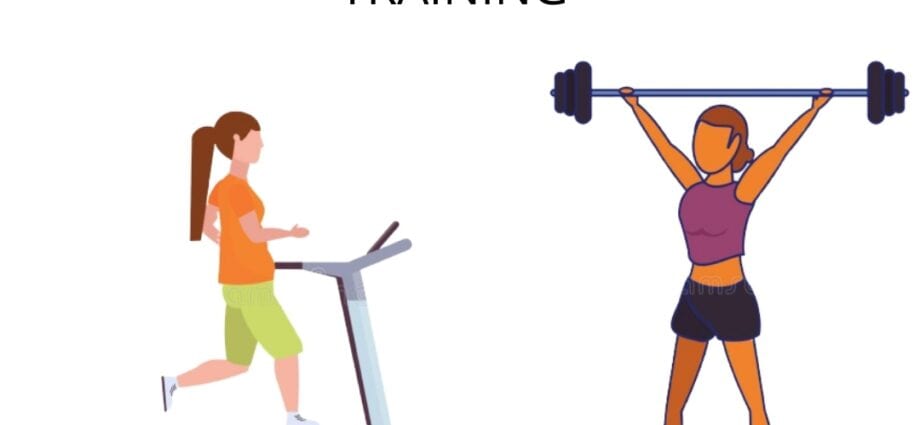The body works differently during cardio and strength training, so the two types of sports have different effects. The most winning weight loss strategy will not be choosing one of the two, but a skillful combination of two types of load. Success in losing weight depends on How long the cost of calories prevails over their intake. Let’s take a look at which workouts make us spend more.
Differences between strength training and cardio
Cardio training on the machine or with your own weight can be performed continuously for a long time. Its duration depends on your endurance and the intensity of the workout itself. It can reach from ten minutes to an hour. At this time, the body works in an aerobic mode – it actively consumes oxygen and spends calories. As soon as the workout is over, the intense calorie consumption stops.
Strength training cannot be performed without interruption. One approach lasts an average of 20-30 seconds, after which a short rest pause is required. If the working weight is correct, you will not complete more than the specified number of repetitions. The organism works in an anaerobic mode on the strength-power – it uses not oxygen, but energy from the muscles. When the workout is over, the body continues to burn calories to repair damaged muscles. The increased calorie consumption continues throughout the day.
A study was conducted where subjects were measured calorie consumption after strength training. Scientists have recorded an increase in energy expenditure by an average of 190 kcal and have concluded that intense workouts lasting an average of 45 minutes increase calorie expenditure at rest.
The more intense the activity, the more calories you burn. After a typical strength training session of 8 exercises performed in four sets of 8-12 reps, calorie expenditure increased by 5% of baseline energy expenditure.
And after an intense workout, where the main exercises were basic exercises performed by the participants in a circle to failure, the daily calorie consumption increased by 23%. Scientists have concluded that strength training improves metabolic function and helps you burn more calories if it is really hard.
Circuit training is considered to be the most suitable for burning fat. They allow you to exercise at high intensity without lifting excessively heavy weights.
How to burn more calories with cardio
Cardio can be a great tool for increasing calorie expenditure if it is not a primary training activity, but an additional one. During cardio training, you expend more energy than strength training. These costs stop when the workout ends.
If aerobic training forces you to burn more calories during exercise, then strength training provides increased energy expenditure during rest. It also means that you don’t have to create too much calorie deficit to lose weight.
Cardio does not build muscle, unlike strength, and muscles not only create an attractive figure silhouette, but also help spend more energy. Whoever has more muscle burns more calories.
For cardio to be effective, you need to choose a feasible minimum that you can do regularly without gaps in order to ensure stable energy consumption for your body. On average, for sustainable weight loss, you need 2-4 strength training per week, do 15-30 minutes of cardio immediately after them and do 2-3 cardio workouts for 45-60 minutes on certain days.
Fat burning does not depend on the type of training, but on a set of measures, which includes not only strength and cardio, but also a balanced diet with a calorie deficit, high non-training activity, healthy sleep and stress control.










